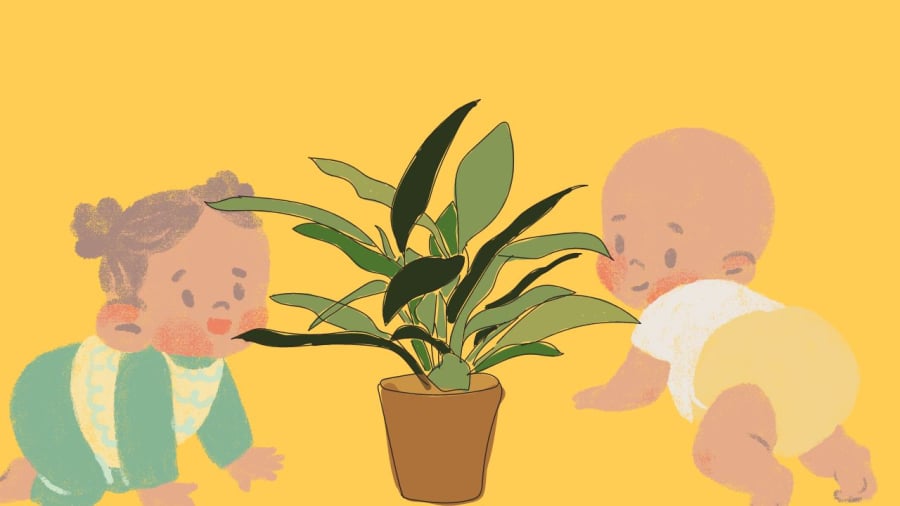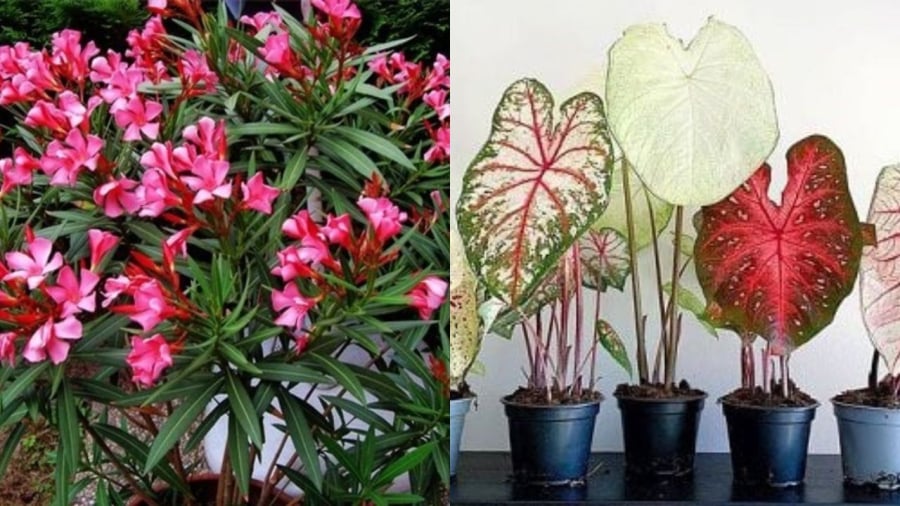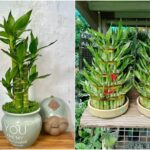Many ornamental plants are beautiful, but they possess natural toxins. While this may not be a concern for adults, it can be dangerous for young children who may not control their impulses and put flowers or leaves in their mouths. This could lead to vomiting, so parents need to be cautious when choosing and placing these plants in their homes or gardens. It is important to pay attention to the placement of pots, especially for plants with toxic properties. Additionally, parents should be vigilant as pots can easily be knocked over by children, causing accidents.

Ornamental Plants: Beautiful but Potentially Toxic to Children
Money Tree Plant – Ingestion may lead to speech impairment
The Money Tree Plant, also known as the “dumb cane,” is a popular houseplant due to its ease of care and lush foliage. However, it earned its nickname from the potential toxicity it poses. Money trees contain oxalic acid, and if ingested by children, it can cause mouth ulcers and a temporary loss of speech due to tongue stiffness. Symptoms of ingestion include a burning sensation in the mouth and throat, diarrhea, hoarseness, drooling, nausea, vomiting, pain when swallowing, and swelling of the mouth and tongue. According to experts, other possible side effects include skin and eye irritation, as well as corneal damage. Therefore, it is crucial to place these plants out of children’s reach. In case of accidental ingestion, rinse the child’s mouth with a cold cloth and seek immediate medical attention if symptoms persist or worsen.
Caladium Plant
The Caladium plant, with its striking pink leaves, might capture the attention of curious children, but it, too, poses a risk. Similar to the money tree plant, caladium contains oxalate crystals that can irritate the mouth and throat and potentially lead to eye and skin irritation.
Symptoms of ingestion include a burning sensation in the mouth or throat, swelling, blistering of the mouth and tongue, hoarseness, difficulty speaking, nausea, vomiting, and diarrhea. If the leaves come into contact with a child’s eyes, it may cause eye pain and corneal damage.

The Beauty and Danger of Dracaena and Caladium Plants
Dracaena Plant
The Dracaena plant, with its beautiful flowers and elegant long leaves, might seem like an ideal addition to any home. However, it is highly toxic and can be fatal to both humans and animals. Fallen leaves or flowers can pose a danger to pets and children, and even the fish in your aquarium are at risk. Therefore, it is advisable not to have this plant in your home.
Anthurium
Anthurium, also known as the flamingo flower or laceleaf, is a popular and easy-to-care-for houseplant with distinctive heart-shaped leaves and flowers. However, if ingested, it can cause a burning sensation in the mouth, pain, swelling, and difficulty swallowing, resulting in a hoarse voice.
Spathiphyllum
The Spathiphyllum, also known as the peace lily, is a recent favorite among plant enthusiasts due to its unique leaf shape and positive connotations. However, it also contains high levels of oxalate crystals, which can irritate the skin and eyes if not handled with care.

The Dangers of the Cactus and its Toxicity
Cactus (Echinocactus grusonii)
The Cactus, with its sharp spines, poses a physical danger to children who might get too close. The milky-white sap can cause burning and irritation, especially if ingested, leading to a weakened immune system. If it comes into contact with the eyes, it can cause blindness or reduced vision.
Peace Lily (Spathiphyllum)
The Peace Lily, with its stunning white flowers, has earned names like “white flag” and “peace lily.” However, it, too, can cause irritation to the mouth and throat, as well as lip swelling, coughing, nausea, and vomiting.
Dieffenbachia
Dieffenbachia, also known as Dumb Cane, is a popular houseplant with beautiful, variegated leaves. However, all parts of this plant are toxic, and if chewed or swallowed, it can cause immediate pain, a burning sensation, and swelling of the lips, mouth, tongue, and throat.
Poinsettia
Poinsettia, with its bright red leaves and festive associations, has a beautiful name and meaning. However, it is essential to be cautious when having this plant around children, as it, too, can be toxic if ingested.
What Plants Suit a Water Person and Bring Wealth?
“Unleash prosperity and fortune with these carefully curated Feng Shui plants, perfect for those with a Water element. Discover a harmonious blend of nature and energy to elevate your wealth and career. These plants are believed to bring positive vibes and good luck, specifically tailored for those with a Water sign.”






































